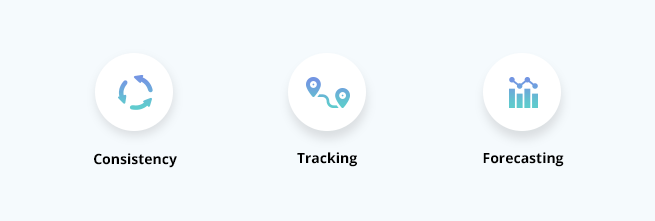If you want to increase your sales volume, you need to take a long, hard look at the efficiency of your sales process. Studies show that sales reps spend more than a fifth of their time on non-sales-related tasks, while direct selling time is down more than 25% over the past five years.

That last bit isn’t necessarily a bad thing since the majority of the buying cycle now occurs on the terms of the buyer before bringing a salesperson into the picture. But if that’s the case, then why are so many sales reps spending precious time on tasks that aren’t directly related to selling?
There’s not a single clear answer to this. But sales automation is proving time over time to provide a single solution to freeing up valuable selling time and creating more of a hands-off approach to your sales process.
What Does Sales Automation Look Like?
Sales automation can be a fuzzy concept since it’s hard to visualize in motion. Rather, you see the results of automation but don’t get the full benefit of seeing all the moving, shifting parts.
Data shows that it can take anywhere from 8 to 17 touchpoints to close a deal with a prospect. These touchpoints may include several phone calls, emails, meetings, text messages, and even demonstrations before they’re willing to commit.

Sales automation swoops in to handle some of these interactions on behalf of your sales rep. For example, that follow up email your rep sends after every initial conversation might become a hands-free operation. Some of that time-sucking data your salesperson enters after each conversation might be logged automatically so they can move on to their next prospect without switching gears to do admin tasks.
Even tasks that occur before leads ever make it to a salesperson can (and should) be automated. For example, when leads come in, there should be a process in place to evaluate the lead quality, determine their readiness to buy, and send them to the appropriate sales rep. Often times, salespeople find themselves sorting through this data manually, which takes away a chunk of their selling time.
In short, sales automation will look different for every business using it, as there’s never a one size fits all solution. Rather, automatic processes can be configured to remove much of the manual labor and guesswork from the selling role to give reps more time to focus on what they do best.
Benefits of Sales Automation
Clearly, it’s hard to ignore the time-saving superhero that sales automation creates. But the conversation shouldn’t end there. Take a look at a few other ways companies find sales automation to be a value-added component to the sales process:

Consistency
Is your sales process all over the place, or do you have a strict step-by-step flow for your reps to follow?
Ideally, you have a sales process that tells reps exactly what needs to happen at every step of the buyer’s journey, but this can be quite difficult to achieve without the right oversight. Sales automation tools not only provide the template for teams to follow, but they also help to ensure that each step is complete before moving on to the next.
This way, every prospect gets a consistent experience with your company. Minor yet important details have less chance of slipping through the cracks so you always have the best opportunity to turn prospects into paydays.
Tracking
Even with an established sales process, you can’t always guarantee your reps have gone by the book. Without transparency, you can only assume that all required tasks have been fulfilled.
Sales automation tools allow you to track the movement of your prospects through the funnel so you know exactly what actions were taken to close the deal.
Forecasting
As you gain insight into your sales funnel, you can use that data to predict sales trends and incoming revenue to make informed decisions. Tracking customer behaviors, market trends, and other data can prove vital to your overall sales strategy and help you stay on goal.
[Also read: Everything you need to know about the MEDDIC sales process]
How Automation Integrates into the Sales Process
Like any new process or sales tool, it’s not enough to simply throw a solution into your existing ecosystem and expect it to work.
Rather, you must first define what your current sales process looks like, where your weaknesses are, and how your solutions will help to fill those gaps.
Think about what you ultimately want from a sales automation process and how it will improve the work of your sales team. From there, you can make better-informed decisions as to which tools are worth investing in and how you can integrate them into your workflow.
Taking a test drive of the tools you’re most interested in can be the single most effective way to understand the full value of your investment. You can gain real hands-on experience to save time on onboarding and implementation and gauge the results they deliver before you bring them on board.
The Future of Selling
Though automation is often thought of as the future of our society, it’s hard to remember that it’s already here and thriving. Automation as part of your sales process is inevitable if you want to remain competitive in your industry and grow your sales team’s abilities at scale.
Put the power of automation in your sales process: reach out today to see how LeadSquared turns manual selling into automatic success.








